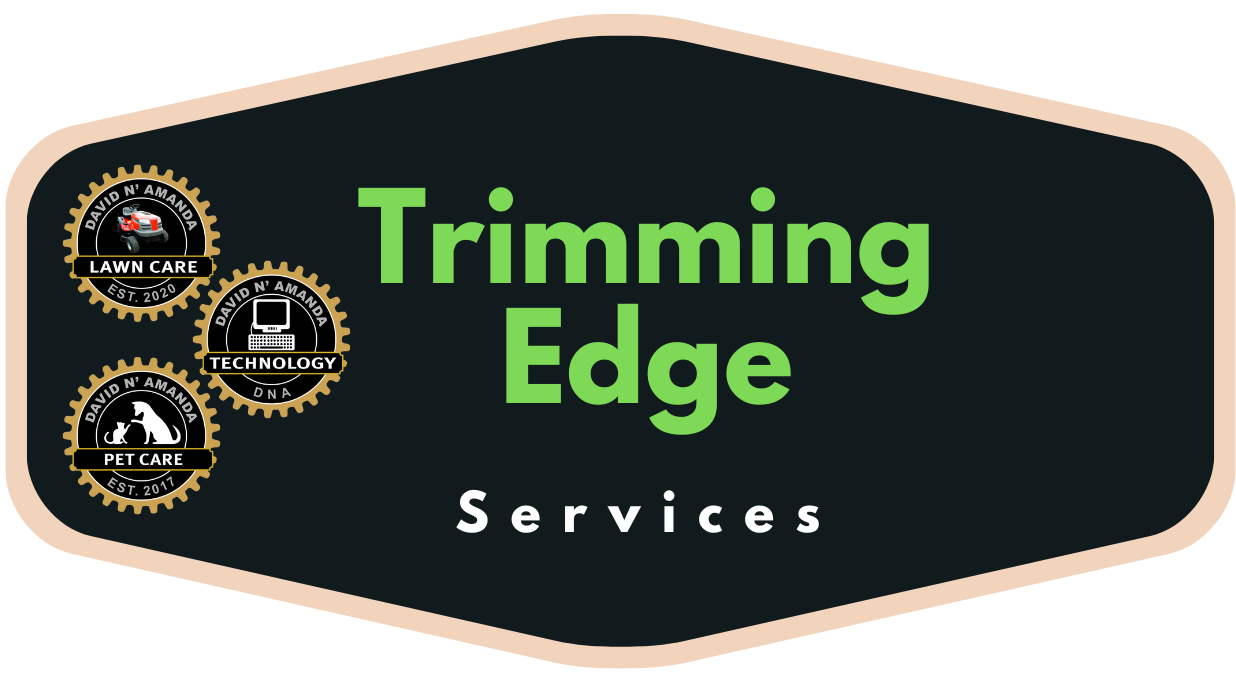You’ll find professional lawn care costs in 2025 ranging from $65-85 per visit for quarter-acre properties, with basic services including mowing, edging, and cleanup. Year-round maintenance packages average $2,800-$3,500 annually, while seasonal plans run $1,200-$1,800. Your actual costs will vary based on location, with Northeast prices 30-40% higher than Southwest rates. Understanding the factors that influence pricing can help you secure the best value for your investment.
Basic Lawn Care Service Packages and Pricing

Basic lawn care service packages in 2025 start at $65-85 per visit for an average quarter-acre residential property. Most standard lawn care packages include mowing, edging, and blowing of hard surfaces. You’ll typically receive service every 7-14 days during peak growing season, with adjustments based on your climate and grass type.
Additional service inclusions you’ll find in basic packages are trimming around obstacles, spot-treating visible weeds, and seasonal cleanup of leaves and debris. Many providers now offer flexible scheduling through mobile apps, letting you customize visit frequency. While prices have increased 12% since 2023 due to rising labor and fuel costs, you’ll still find competitive rates by comparing local providers. Most companies also offer discounts for prepaid seasonal contracts or monthly subscription plans.
Factors That Influence Professional Lawn Care Rates
The size of your property and its geographical location will greatly impact your lawn care costs in 2025, with urban areas typically commanding higher rates than rural regions. You’ll find that extensive service types, such as fertilization, weed control, and seasonal cleanups, naturally cost more than basic mowing packages. Your chosen service frequency also plays a vital role in pricing, as weekly maintenance programs often offer better value per visit compared to one-time or sporadic services.
Property Size and Location
Professional lawn care rates vary considerably based on your property’s physical attributes and geographical setting. Your lawn size directly impacts service costs, with most companies charging between $45-$80 per visit for properties under 5,000 square feet, while larger yards can cost $150+ per service. You’ll typically pay premium rates in urban areas due to higher operating costs and increased demand.
Geographic climate also plays an essential role in pricing. If you live in regions with longer growing seasons like Florida or Texas, you’ll need more frequent maintenance visits compared to properties in cooler climates. Furthermore, your property’s terrain complexity, obstacles (trees, flower beds, hardscaping), and accessibility affect service rates. Companies often charge extra for yards with steep slopes or limited access points.
Service Types and Frequency
Beyond property characteristics, your selected service package and maintenance schedule heavily influence lawn care costs. Most companies offer tiered lawn care frequency options ranging from basic mowing to extensive maintenance programs. You’ll find the sweet spot between cost and care level depends on your lawn’s specific needs.
| Service Type | Frequency | Avg. Cost/Visit |
|---|---|---|
| Basic Mowing | Weekly | $45-65 |
| Full Service | Bi-weekly | $85-125 |
| Premium Care | Monthly | $150-200 |
| Seasonal Prep | Quarterly | $250-350 |
Service packages typically bundle multiple treatments like fertilization, weed control, and pest management. The more frequent your service visits and the more extensive your chosen package, the higher your total investment will be. However, regular maintenance often prevents costly remedial work down the line.
Regional Price Variations Across the United States

You’ll find dramatic differences between lawn care costs in the Northeast versus Southwest regions of the United States, with Northeast prices running 30-40% higher due to shorter growing seasons and higher operational costs. Your location’s regional labor rates play an essential role in determining lawn care expenses, as areas with higher costs of living typically command premium service fees. If you’re in the Southwest, you’ll benefit from year-round growing seasons and lower labor costs, though drought conditions and water restrictions may add unexpected expenses to your lawn care budget.
Northeast vs. Southwest Costs
Significant price variations for lawn care services exist between the Northeast and Southwest regions of the United States, with Northeastern homeowners typically paying 30-40% more than their Southwestern counterparts. You’ll find that in 2025, the average lawn care cost in the Northeast ranges from $75-95 per visit, while Southwest prices hover between $55-65.
These regional differences stem from distinct lawn care trends and operational challenges. The northeast climate demands more frequent mowing during peak growing seasons, specialized equipment for leaf removal, and snow management services. Meanwhile, Southwestern properties often require less intensive maintenance due to drought-resistant landscaping and xeriscaping practices. Labor costs also play an essential role Northeast service providers face higher overhead expenses, insurance rates, and seasonal workforce demands, which directly impact your service costs.
Regional Labor Rate Impact
The national terrain of labor rates dramatically shapes lawn care pricing across different regions in 2025. You’ll find significant regional labor variations, with West Coast providers charging up to 35% more than their Midwest counterparts due to higher living costs and state-mandated minimum wages.
In metropolitan areas like Seattle, San Francisco, and New York City, you’re looking at premium rates of $75-95 per hour for basic lawn maintenance. Meanwhile, in states like Kansas, Missouri, and Oklahoma, you’ll typically pay $45-65 per hour for the same services. These pricing disparities reflect local economic conditions, competition levels, and workforce availability. Understanding your region’s standard rates helps you better evaluate service quotes and negotiate fair prices with lawn care professionals.
Additional Services and Their Cost Impact
While basic lawn maintenance forms the foundation of yard care, specialized services can substantially increase your annual landscaping costs in 2025. You’ll find that organic treatments and pest control services often top the list of supplementary expenses, reflecting growing demand for eco-friendly solutions.
Service | Extra Cost
—|—
Organic Fertilization | $75-125 per application
Pest Management | $200-350 per treatment
Aeration & Overseeding | $250-400 per service
Tree & Shrub Care | $150-275 per visit
These premium services, while initially more expensive than traditional chemical treatments, can provide long-term benefits to your lawn’s health. When budgeting for thorough lawn care, you’ll need to factor in at least 30% above your base maintenance costs to accommodate these specialized treatments throughout the growing season.
Seasonal vs. Year-Round Service Price Differences

Understanding seasonal versus year-round pricing structures helps you improve value when planning your lawn care budget. In 2025, you’ll find significant cost variations between seasonal services and year-round services, with annual contracts typically offering 15-20% savings over pay-per-visit arrangements.
- Year-round service packages average $2,800-$3,500 annually, including winter maintenance and priority scheduling
- Seasonal services cost $1,200-$1,800 for spring-fall coverage, but exclude off-season lawn protection
- Monthly payment plans for year-round contracts reduce upfront costs, averaging $235-$290 per month
- Peak season (April-September) rates run 20-30% higher than off-season pricing for individual services
When comparing options, consider that year-round services provide consistent care and often include complimentary treatments that would cost extra with seasonal packages.
Cost Comparison: DIY vs. Professional Lawn Care
Deciding between DIY lawn maintenance and professional services requires careful analysis of both direct costs and hidden expenses in 2025’s market. While DIY techniques can save you $800-$1,200 annually, you’ll need to factor in equipment rental costs ($150-$300 per season) and time investment (4-6 hours weekly).
Professional benefits include expert-level results and elimination of maintenance requirements for tools and supplies. Though you’ll pay $2,000-$3,500 yearly for professional care, you’re investing in specialized skill levels and precise seasonal timing. Consider that DIY approaches demand learning proper techniques, storing equipment, and managing weather-dependent schedules. Professional services offset their higher costs through efficiency, reliability, and guaranteed results. Your choice should align with your available time, desired lawn quality, and long-term cost savings goals.
Hidden Fees and Extra Charges to Watch For
Standard lawn care pricing often conceals extra charges that can greatly impact your total cost in 2025. When reviewing service agreements, you’ll need to carefully examine the fine print to identify potential hidden costs that could increase your expenses by 15-30% above the base rate.
- Fuel surcharges that fluctuate monthly based on current gas prices, typically ranging from $5-15 per visit
- Emergency service fees for same-day or weekend requests, which can raise 50-75% to standard rates
- Supplementary charges for services like leaf removal, weed control, or pest treatment that aren’t included in basic maintenance packages
- Equipment fees for specialized tools or machinery needed for specific lawn conditions, often $25-50 per use
Always request a detailed breakdown of all potential charges before signing any service agreements to avoid unexpected costs.
Tips for Getting the Best Value in Professional Lawn Care
While professional lawn care prices continue to rise in 2025, you’ll find significant savings by implementing strategic approaches to service selection and scheduling. Start by comparing service contracts from multiple providers, focusing on companies with positive customer reviews and transparent pricing models.
Book your services during off-peak seasons when providers offer competitive rates. Consider bundling services like mowing, fertilization, and pest control for package discounts. Many companies now offer loyalty programs and early booking incentives that can reduce your annual costs by 15-25%.
Sign up for annual maintenance plans rather than one-off services, as they typically come with better rates and priority scheduling. Don’t forget to negotiate pricing – many providers will match or beat competitors’ quotes to secure your business.
Frequently Asked Questions
Are Lawn Care Services Covered by Home Insurance Policies?
You might be surprised to learn that your standard home insurance typically doesn’t cover routine lawn care services. While your policy may protect against sudden lawn damage from covered perils like vandalism or fallen trees, it won’t pay for regular maintenance. Most policy exclusions specifically state that landscaping services, mowing, and general upkeep aren’t covered. If you’re looking for lawn insurance coverage, you’ll need to investigate separate service contracts or maintenance agreements.
How Long Does It Take for Newly Planted Grass to Establish?
You’ll see your newly planted grass establish in different timeframes depending on the seed type and ideal planting conditions. Cool-season grasses like Kentucky bluegrass typically take 5-7 days to germinate and 6-8 weeks to fully establish. Warm-season varieties like Bermuda may need 10-30 days to germinate. For the best grass growth timeline, plant during your region’s prime growing season and maintain consistent soil moisture and temperature for best results.
Can Professional Lawn Care Companies Handle Pest-Infested Trees and Shrubs?
Don’t let those pesky insects destroy your beloved environment! Yes, professional lawn care companies can effectively handle pest-infested trees and shrubs through thorough pest management solutions. They’ll assess your tree health, identify specific infestations, and implement targeted treatments using EPA-approved products. You’ll benefit from their certified arborists and technicians who can spot early warning signs, prevent spread to healthy plants, and maintain ongoing protection through scheduled monitoring and preventive care programs.
Do Lawn Care Professionals Work During Light Rain Conditions?
Most lawn care professionals will continue working during light rain, but they’ll adjust their services based on weather conditions. You can expect them to handle rainy day operations like trimming, leaf removal, and some maintenance tasks. However, they’ll avoid mowing wet grass as it can damage your lawn and equipment. Safety concerns and lawn maintenance challenges may lead them to reschedule if there’s heavy rain, lightning, or if the ground becomes too saturated.
What Certifications Should I Look for When Hiring a Lawn Care Company?
When hiring a lawn care company, you’ll want to look for key certification types that demonstrate expertise and professionalism. Seek providers with state pesticide applicator licenses, NALP (National Association of Outdoor Space Professionals) certifications, and ISA (International Society of Arboriculture) credentials. Following smart hiring guidelines, you should also verify they have liability insurance and worker’s compensation coverage. Supplementary certifications in sustainable practices or organic lawn care can indicate a company’s commitment to environmental stewardship.


No responses yet